2-NITROBENZYL CHLORIDE
Synonym(s):α-Chloro-2-nitrotoluene;2-Nitrobenzyl chloride
- CAS NO.:612-23-7
- Empirical Formula: C7H6ClNO2
- Molecular Weight: 171.58
- MDL number: MFCD00007185
- EINECS: 210-300-5
- SAFETY DATA SHEET (SDS)
- Update Date: 2024-12-18 14:08:57
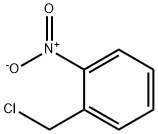
What is 2-NITROBENZYL CHLORIDE?
Chemical properties
liquid
The Uses of 2-NITROBENZYL CHLORIDE
2-Nitrobenzyl chloride has been used to introduce the photo labile 2-nitrobenzyl protecting group for the phenolic OH group of tyrosine. It is used as a pharmaceutical intermediate.
The Uses of 2-NITROBENZYL CHLORIDE
2-Nitrobenzyl chloride was used in the synthesis of S-(2-nitrobenzyl)cysteine which was inserted into human erythropoietin. 2-Nitrobenzyl chloride was used to prepare 4,4′-dinitrostillbene.
General Description
Pale yellow crystals. Insoluble in water. Is thermally unstable.
Air & Water Reactions
Insoluble in water.
Reactivity Profile
A halogenated aromatic nitro compound. Aromatic nitro compounds range from slight to strong oxidizing agents. If mixed with reducing agents, including hydrides, sulfides and nitrides, they may begin a vigorous reaction that culminates in a detonation. The aromatic nitro compounds may explode in the presence of a base such as sodium hydroxide or potassium hydroxide even in the presence of water or organic solvents. The explosive tendencies of aromatic nitro compounds are increased by the presence of multiple nitro groups.
Health Hazard
ACUTE/CHRONIC HAZARDS: Toxic. Lachrymator. Causes irritation on contact. Hazardous decomposition products. Mutagen.
Fire Hazard
2-NITROBENZYL CHLORIDE is combustible.
Biochem/physiol Actions
2-Nitrobenzyl chloride reacts with N-methyldiethanolamine and further reaction of the resulting quaternary diol with thionyl chloride at room temperature yields nitrobenzyl mustard quaternary salts.
Properties of 2-NITROBENZYL CHLORIDE
| Melting point: | 46-48 °C (lit.) |
| Boiling point: | 127-133 °C/10 mmHg (lit.) |
| Density | 1,556 g/cm3 |
| refractive index | 1.5557 (estimate) |
| Flash point: | >230 °F |
| storage temp. | Store below +30°C. |
| solubility | ethanol: soluble98% |
| form | Crystals, Crystalline Powder or Chunks |
| color | Yellow to tan |
| Water Solubility | Soluble in acetone, alcohol benzene, diethyl ether, and ethanol (98%). Insoluble in water. |
| BRN | 388396 |
| Stability: | Stable. Incompatible with bases, moisture, acohols, oxidizing agents, amines. Corrodes steel. |
| CAS DataBase Reference | 612-23-7(CAS DataBase Reference) |
| EPA Substance Registry System | o-Nitrobenzyl chloride (612-23-7) |
Safety information for 2-NITROBENZYL CHLORIDE
| Signal word | Warning |
| Pictogram(s) |
 Exclamation Mark Irritant GHS07 |
| GHS Hazard Statements |
H315:Skin corrosion/irritation H319:Serious eye damage/eye irritation H335:Specific target organ toxicity, single exposure;Respiratory tract irritation |
| Precautionary Statement Codes |
P261:Avoid breathing dust/fume/gas/mist/vapours/spray. P264:Wash hands thoroughly after handling. P264:Wash skin thouroughly after handling. P271:Use only outdoors or in a well-ventilated area. P280:Wear protective gloves/protective clothing/eye protection/face protection. P302+P352:IF ON SKIN: wash with plenty of soap and water. P305+P351+P338:IF IN EYES: Rinse cautiously with water for several minutes. Remove contact lenses, if present and easy to do. Continuerinsing. |
Computed Descriptors for 2-NITROBENZYL CHLORIDE
2-NITROBENZYL CHLORIDE manufacturer
New Products
Tert-butyl bis(2-chloroethyl)carbamate (S)-3-Aminobutanenitrile hydrochloride N-Boc-D-alaninol N-BOC-D/L-ALANINOL N-octanoyl benzotriazole 4-Hydrazinobenzoic acid 3,4-Dibenzyloxybenzaldehyde Electrolytic Iron Powder 1,1’-CARBONYLDIIMIDAZOLE R-2-BENZYLOXY PROPIONIC ACID 4-HYDROXY BENZYL ALCOHOL 1,1’-CARBONYLDI (1,2-4 TRIAZOLE) S-2-CHLORO PROPIONIC ACID (2-Hydroxyphenyl)acetonitrile 4-Bromopyrazole 5-BROMO-2CYANO PYRIDINE 5,6-Dimethoxyindanone 5-broMo-2-chloro-N-cyclopentylpyriMidin-4-aMine 3-(Hydroxymethyl)benzoate N-Boc-2-chloroethylamine 1-Bromo-2-methoxy-3-nitrobenzene N-Methyl-3-cyclopenten-1-amine 2-Bromo-3-hydroxybenzaldehyde 1H-indazole-5-carboxamideRelated products of tetrahydrofuran
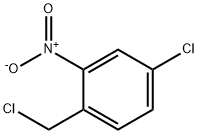
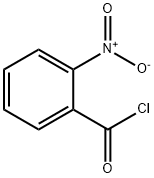

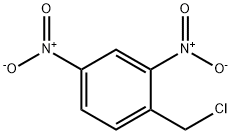

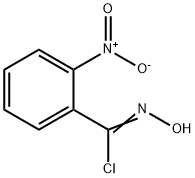

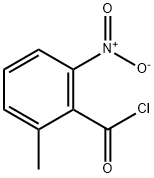
You may like
-
 2-Nitrobenzyl chloride, 98% CAS 612-23-7View Details
2-Nitrobenzyl chloride, 98% CAS 612-23-7View Details
612-23-7 -
 2-Nitrobenzyl chloride CAS 612-23-7View Details
2-Nitrobenzyl chloride CAS 612-23-7View Details
612-23-7 -
 7441-43-2 98%View Details
7441-43-2 98%View Details
7441-43-2 -
 1260741-78-3 6-Bromo-3-iodo-1-methyl-1H-indazole 98%View Details
1260741-78-3 6-Bromo-3-iodo-1-methyl-1H-indazole 98%View Details
1260741-78-3 -
 4-bromo-3,5-dimethylbenzenesulfonyl chloride 1581266-79-6 98%View Details
4-bromo-3,5-dimethylbenzenesulfonyl chloride 1581266-79-6 98%View Details
1581266-79-6 -
 2490430-37-8 98%View Details
2490430-37-8 98%View Details
2490430-37-8 -
 N-(5-Amino-2-methylphenyl)acetamide 5434-30-0 98%View Details
N-(5-Amino-2-methylphenyl)acetamide 5434-30-0 98%View Details
5434-30-0 -
 124371-59-1 98%View Details
124371-59-1 98%View Details
124371-59-1